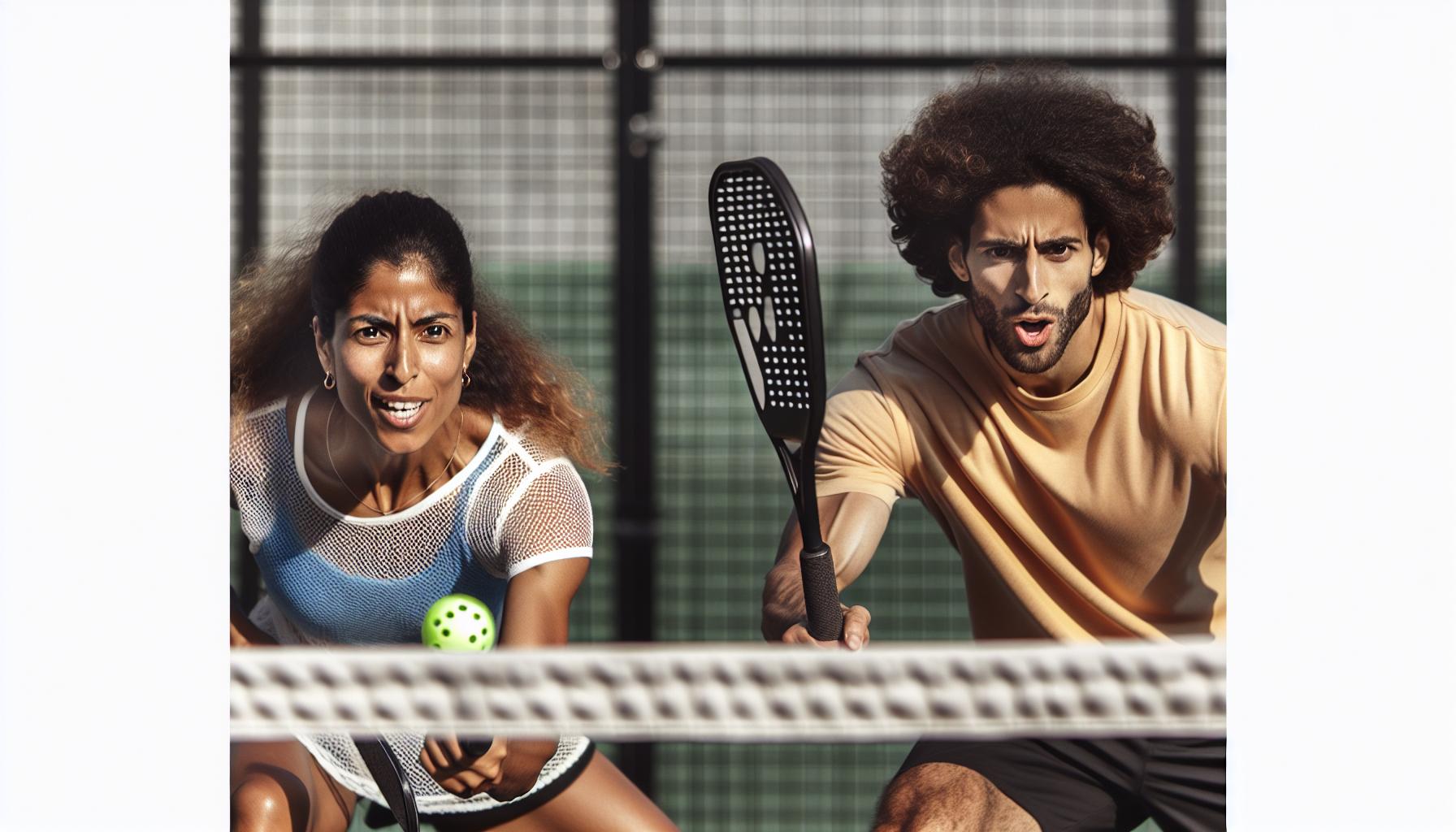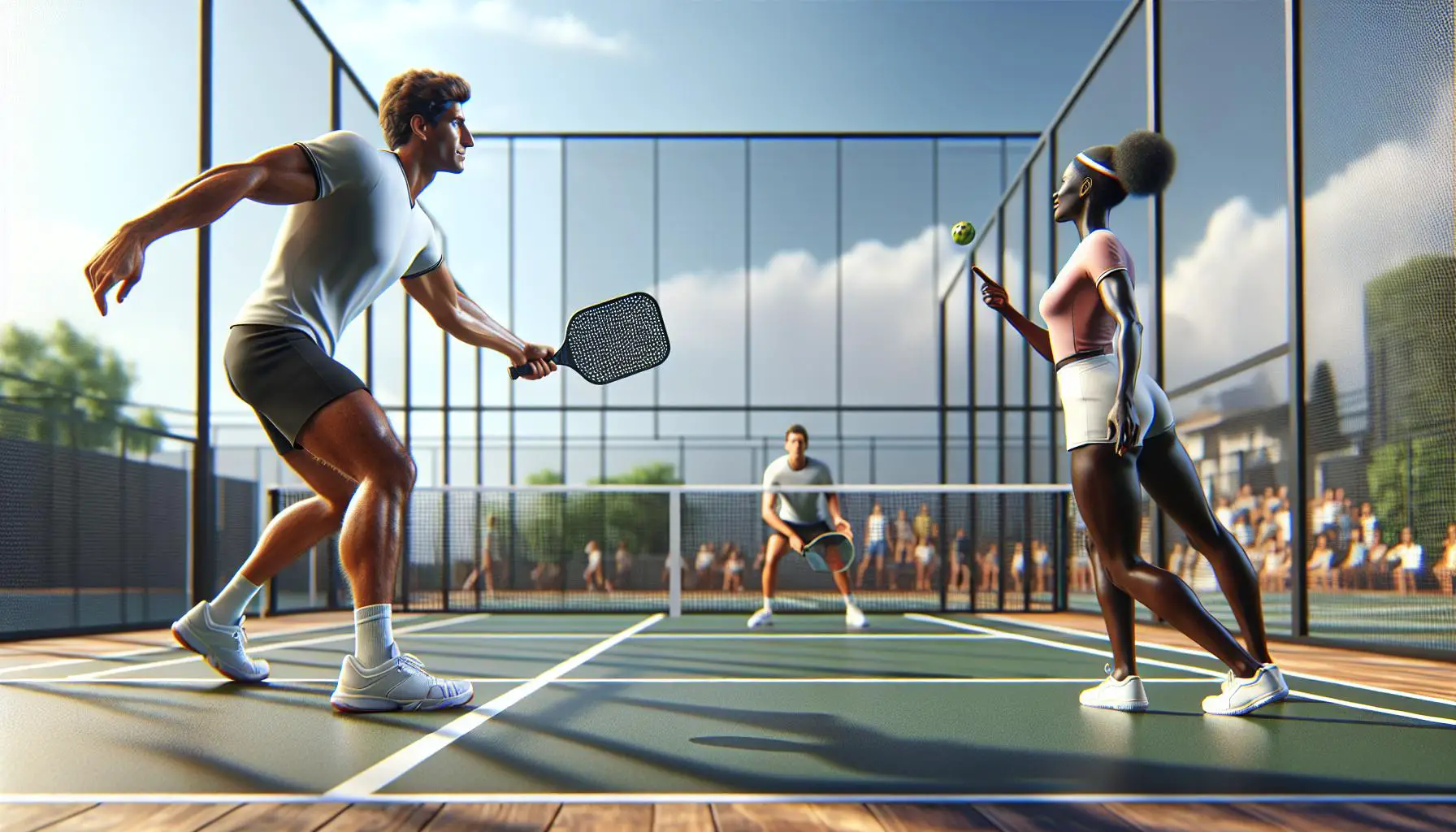Mastering the art of the dink shot in pickleball isn’t just a skill—it’s a game changer. This subtle yet strategic play can be the difference between winning and losing a point. It’s all about finesse and timing, turning the tide in games where power shots dominate.
For those looking to elevate their game, understanding when and how to execute a perfect dink shot is crucial. It’s not just about softly tapping the ball over the net; it’s a calculated move that requires practice and precision. Let’s dive into the strategies that can help players use dink shots to outsmart their opponents and rack up those winning points.
The Importance of Dink Shots in Pickleball
Pickleball, a sport that combines elements of tennis, badminton, and table tennis, has seen a meteoric rise in popularity. Amidst its fast-paced nature and strategic gameplay, one shot has emerged as a quintessential tool for victory: the dink shot. The importance of mastering this subtle, yet powerful, technique cannot be overstressed. It’s not just another shot in the game; it’s a critical strategy for those aiming to dominate the court.
The power of the dink shot lies in its ability to change the tempo of the game. By executing a soft, arced shot that barely clears the net and lands in the opponent’s non-volley zone, players force their adversaries into a position that is harder to attack from. This can dramatically shift the dynamics of a rally, transforming an aggressive exchange into an opportunity for strategic placement and control.
- Precision and Control: Mastery of the dink shot offers players the ability to place the ball with pinpoint accuracy, making it challenging for opponents to return with power.
- Strategic Advantage: It opens up opportunities to exploit weaknesses in the opponent’s gameplay, especially against those who prefer fast-paced, power-driven exchanges.
- Pace Regulation: It allows players to slow down the game, providing a chance to reset and prepare for the next move strategically.
To incorporate the dink shot effectively into gameplay, players must understand not just the technique but also the right moments to use it. It’s not merely about catching the opponent off-guard but about creating a pattern of play that leads to unforced errors or presents opportunities to seize control of the net. The decision to dink should consider the opponent’s position, the current score, and the player’s own strengths and weaknesses.
Practice and patience are paramount for those looking to improve their dink game. It requires a finesse touch that can only be honed through repetition, ideally with a partner who can simulate real-match scenarios. Tracking the ball’s trajectory, mastering the gentle grip required for the soft hit, and perfecting the follow-through are all vital components that contribute to the effectiveness of the dink shot.
Mastering the Finesse: Techniques for Perfect Dink Shots

In the world of pickleball, mastering the dink shot is akin to an artist perfecting their brush strokes. It’s all about finesse, timing, and precision. For many, achieving the perfect dink shot feels like a daunting task, but with the right techniques and a bit of practice, anyone can turn their dink shots into a formidable weapon.
The first step towards mastery is understanding the mechanics of the shot. A dink shot isn’t just a gentle tap over the net—it’s a calculated move designed to put the opponent in an awkward position. To execute a dink shot, players must focus on their grip and paddle angle. The grip should be loose but controlled, allowing for quick adjustments, while the angle of the paddle needs to be slightly open. This ensures the ball arcs gently over the net, landing softly in the opponent’s kitchen zone.
Positioning plays a crucial role as well. Players should aim to stand close to the kitchen line, but not so close that they risk foot faults. From this position, they can easily move forward to take the shot or step back if the ball bounces higher than expected. Ideal positioning not only makes executing the dink shot easier but also puts pressure on the opponent, narrowing down their response options.
Practice makes perfect, and this adage holds especially true for dink shots. Regular drills with a partner can drastically improve players’ timing and accuracy. One effective drill involves exchanging dink shots at the kitchen line, focusing on placement rather than power. This not only hones the dink technique but also improves players’ reflexes and adaptability.
Moreover, it’s vital for players to develop a strategic mindset. Instead of randomly selecting when to dink, players should observe their opponents and identify patterns or weaknesses. For example, if an opponent struggles with low shots on their backhand side, a well-placed dink shot to that area could be particularly effective. Strategic use of the dink shot can disrupt opponents’ rhythm and force them into making errors.
Timing is Everything: When to Utilize the Dink Shot

In the fast-paced world of pickleball, mastering the dink shot isn’t just about how it’s executed but also when. Timing is pivotal. Knowing the opportune moments to dink can shift the momentum of a game, catching opponents off-guard and securing crucial points. The decision to use a dink shot boils down to strategy, player position, and reading the game’s dynamics.
Identifying the perfect moment for a dink shot is both an art and a science. Generally, there are several scenarios where implementing a dink could be most beneficial:
- When opponents are positioned deep: This is prime time for a dink shot. If the opponents are hanging back, a well-placed dink shot can force them to rush forward, likely resulting in a less controlled return.
- During long volleys: As the rally extends and players settle into a rhythm, a sudden dink shot can break the pace, making it hard for opponents to adjust quickly.
- When you need to regain control: If the game’s pace is not in your favor, a strategic dink can slow down the rally, allowing you to reset and take control.
Timing your dink shots with precision requires keen observation. Watching for signs that your opponents are tiring or showing frustration can provide an ideal opportunity to introduce a dink shot, significantly altering the game’s tempo. Besides, paying attention to your opponent’s paddle position can be telling. If they’re preparing for a power shot, a dink could catch them off balance, struggling to make a soft, controlled return.
Practicing with a partner can significantly enhance one’s ability to recognize the right moments for a dink shot. Drills that mimic game scenarios, changing rhythms, and varying distances can help players develop an instinct for when a dink shot might be most effective. It’s not just about the shot itself but understanding the flow of the game and the subtle cues that dictate the timing of such a strategy.
Moreover, incorporating dink shots into your game plan demands flexibility. Each match presents unique challenges, and opponents react differently to the dink. It’s vital to adapt and sometimes even anticipate the need for a dink shot before the perfect scenario presents itself. This proactive approach keeps opponents guessing and can lead to unforced errors on their part, further tipping the scales in your favor.
Offensive Dinking Strategies: Surprise and Overwhelm

Executing offensive dinking strategies in pickleball is a surefire way to tip the scales in one’s favor during a tight match. Rather than simply aiming to keep the ball in play, the offensive approach focuses on using the dink shot to surprise and overwhelm one’s opponents. Players adopt this mindset not just to rally but to strategically place shots that increase their chances of winning points.
The essence of an effective offensive dinking strategy lies in unpredictability and precision. Players should aim to mix up their shot placement, alternating between deep and short shots, to keep opponents guessing. For instance, after a few deep dinks that push the opponents back, a sharply angled dink close to the net can catch them off guard, creating an opening for a point.
Another technique involves changing the pace of the dink shots. A sudden slow dink after a series of fast-paced exchanges can disrupt the opponents’ rhythm, making it difficult for them to maintain a strong defensive stance. This tactic not only throws off the opposition but also gives the player time to position themselves advantageously on the court.
Engaging in cross-court dinking duels is another offensive strategy. These duels require skill and patience, as the goal is to outlast the opponent in a diagonal exchange. By consistently aiming dinks towards the opponents’ weaker side, a player can gradually wear them down, forcing a mistake or a weaker return that can then be capitalized on with a stronger, more aggressive shot.
Practicing these offensive dinking strategies demands a mindful approach to each shot. Players need to observe their opponents’ positioning and readiness constantly. Being attuned to these nuances enables one to exploit fleeting moments of vulnerability, turning what might seem like a benign dink shot into a strategic offensive weapon.
| Strategy | Objective | Tactic |
|---|---|---|
| Mix Up Shot Placement | Increase unpredictability, surprise opponent | Alternate between deep and short dinks to keep opponents guessing. |
| Change Pace | Disrupt opponents’ rhythm | Vary the speed of dink shots, mixing fast and slow plays. |
| Cross-Court Dinking Duels | Exploit opponent’s weaker side, force errors | Aim dinks towards the opponents’ weaker side in diagonal exchanges. |
Defensive Dinking Strategies: Neutralizing Your Opponent’s Attacks

In the fast-paced game of pickleball, defensive dinking becomes a crucial skill for turning the tide of a match. Defensive dinking is not just about keeping the ball in play; it’s about neutralizing your opponent’s attacks and setting up opportunities for a counterattack. By mastering defensive dinking, players can keep their opponents guessing and prevent them from dominating the net.
To start, players should focus on their positioning and footwork. Being in the right place at the right time allows a player to effectively respond to an opponent’s aggressive plays. Keeping a low center of gravity and staying on the balls of your feet will enable quick lateral movements essential for reaching dinks aimed at the corners of the kitchen.
Next, control over the paddle is vital. Players need to develop a soft touch, enabling them to return shots with precision rather than power. This often means loosening the grip slightly and using the wrist more than the arm to guide the paddle. The aim is to drop the ball just over the net, in a spot that’s difficult for the opponent to attack.
A strategic mindset is equally important. Players should always be aware of their opponent’s position and anticipate their next move. This awareness can help in deciding whether to place a dink straight ahead or angle it away from the opponent. Mixing up the placement of shots adds an element of unpredictability that can frustrate and tire out an opponent.
Players should also recognize when to change the pace. Sometimes, a slightly firmer dink, known as a “push dink,” can catch an aggressive opponent off-balance, potentially leading to an easy point. However, this should be used sparingly and with precise control to ensure it doesn’t become an easy volley for the opponent.
Practicing with a partner can greatly enhance a player’s defensive dinking ability. Drills that focus on accuracy, touch, and movement across the court can improve both players’ defensive skills. It’s beneficial to engage in practice matches that emphasize long rallies and shot placement over power.
Understanding and recognizing patterns in an opponent’s strategy can also provide an edge. If a player notices that an opponent favors one side of the court or has a weaker backhand, directing dinks to exploit these weaknesses can shift the momentum of the match.
Conclusion: Outsmarting Opponents and Winning Points with Dink Shots
Mastering the dink shot in pickleball isn’t just about technical skill—it’s about outsmarting your opponents and seizing control of the game. By incorporating the techniques and strategies discussed, players can elevate their game to new heights. Whether it’s through the finesse of a perfectly executed dink, the strategic placement to exploit an opponent’s weakness, or the tactical mindset to anticipate and counter attacks, the dink shot is a powerful tool in any player’s arsenal. Remember, practice doesn’t just make perfect; it makes permanent. So, grab a partner, hit the courts, and start putting these strategies into action. With patience, practice, and a bit of strategic thinking, you’ll soon find yourself winning more points and, ultimately, more games.














0 Comments